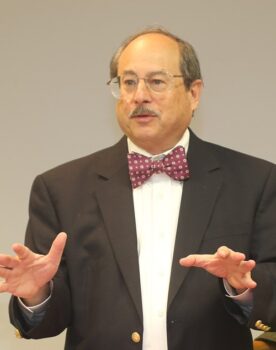
A second federal judge has issued a preliminary injunction against enforcement of a new Bureau of Alcohol, Tobacco, Firearms, and Explosives (ATF) rule that makes pistol stabilizing braces subject to the National Firearms Act of 1934.
According to a statement on the Second Amendment Foundation website, U.S. District Judge Jane Boyle granted a preliminary injunction against the rule in the Foundation’s lawsuit, SAF et al. v. ATF et al. The suit is filed in the U.S. District Court for the Northern District of Texas in Dallas.
Boyle put the case on hold pending action in a separate but related case, Mock v. Garland.
The judge, in that case, denied plaintiffs an injunction on the ATF rule. But granted a partial injunction while they prepared an expedited appeal of that ruling. Lawyers for one of the plaintiffs, the Firearms Policy Coalition, have asked the court to clarify whether the injunction applies only to their case or if it is nationwide.
According to the FPC website, the court will hear oral arguments in Mock v. Garland on June 29, 2023. FPC did not return a call seeking comment.


Boyle decided to wait for that ruling.
“The Court grants in part the motion and issues a preliminary injunction as to Plaintiffs in this case (SAF et al. v ATF et al.) only, pending resolution of the expedited appeal in Mock v. Garland. Upon resolution of the appeal in Mock, the court will address the remaining relief plaintiffs request in their motion,” Boyle’s decision reads.
Joining the Foundation as plaintiffs are Samuel Walley, William Green, and Rainier Arms, LLC. They are suing the ATF, ATF Director Steve Dettelbach, the Department of Justice, and U.S. Attorney General Merrick Garland.
“This is a significant win. When Joe Biden took office, he immediately began weaponizing the ATF, and this new pistol brace rule is a result of that strategy. It amounts to a dramatic shift in policy,” Second Amendment Foundation founder and Executive Vice President Alan M. Gottlieb wrote in a press release.
“In the process, they’re turning millions of law-abiding citizens into criminals. We can’t allow that without a fight.”
The pistol-stabilizing brace was invented in 2012 to assist the disabled and others who may need help shooting large-format pistols built on the AR 15 and similar platforms. The stabilizing brace attaches to the rear of the pistol and the shooter’s forearm. This allows the shooter a steadier aim while holding the pistol with one hand.
The ATF issued several open letters stating the braces did not change pistols into short-barreled rifles (SBR). However, the rule published last January said that changes in the braces’ design and videos on how to use them make clear that the items convert the large format pistols into prohibited SBRs.
Since then, owners of the devices have been advised to remove the braces and render them unusable, register them with the government as regulated firearms under the NFA, or convert the pistols into legal rifles.
On May 31, the ATF’s 120-day amnesty period for owners of the braces will end. Pistol brace owners who don’t destroy, register, or surrender the braces to the government by the deadline will possess contraband and be subject to arrest, according to the ATF.
The ATF has waived the $200 tax for registering the weapons during the amnesty period. Estimates on how many gun owners are affected range from 3 million to 40 million.
Subscribe to George Magazine and unlock exclusive bonuses. Your subscription now includes a free crypto essentials guide and three premium downloadable images. These images are perfect for personal use as desktop or mobile backgrounds, with thumbnail previews shown below.




Discount Applied Successfully!
Your savings have been added to the cart.